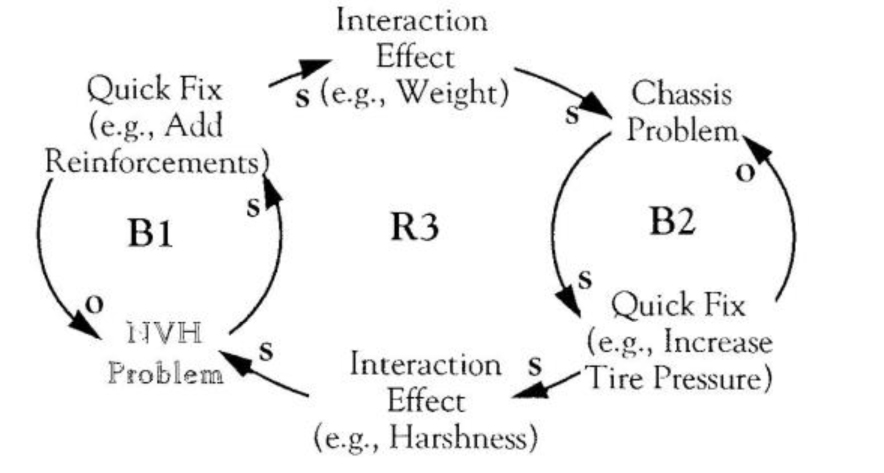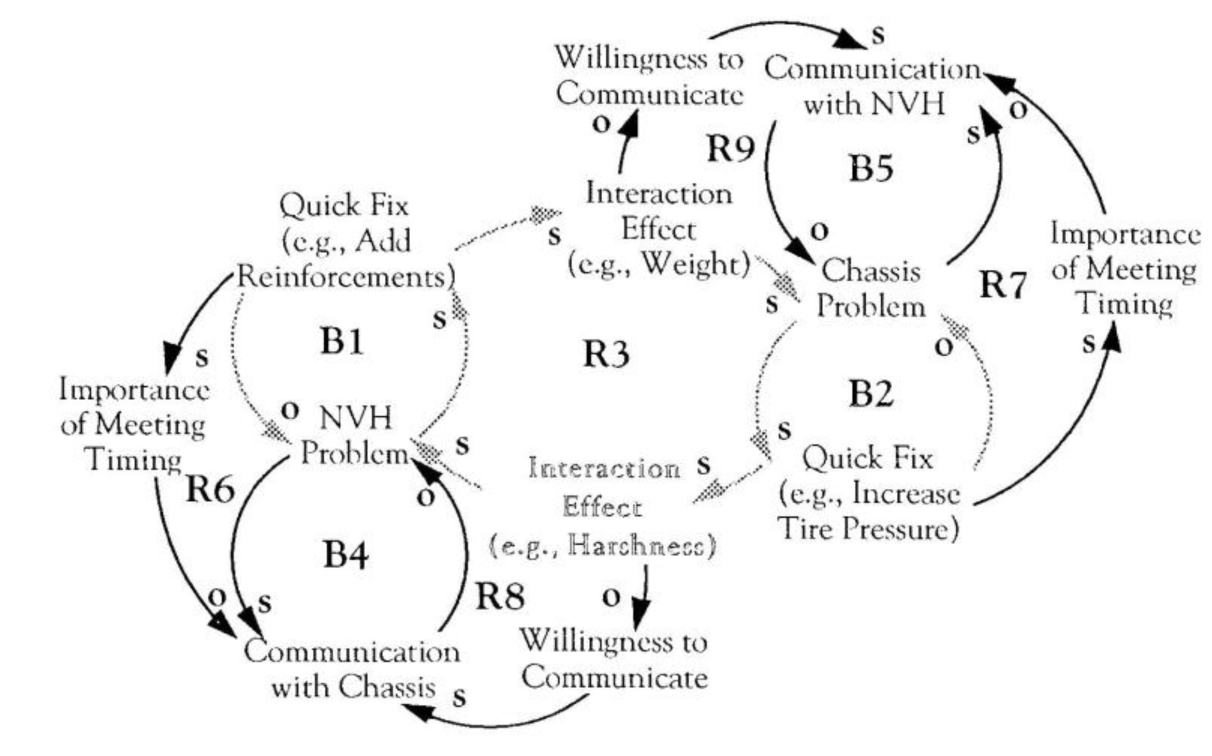Something there is that doesn’t love a wall,” wrote American poet Robert Frost in his poem “Mending Wall.” As the speaker and his neighbor engage in the annual ritual of mending the stone wall that divides their property, he ponders the origin and meaning of the phrase “good fences make good neighbors.” At one time, the wall may have been used to keep the cows separated, but there are no cows now. Perhaps the mending is an old ritual designed to bring neighbors together in community; yet the effort is accomplished in silence. Yes, he puzzles, there is something that doesn’t love a wall, and yet the wall remains.
Despite many efforts, walls persist in our organizations as well — often in exaggerated proportions. The logic seems to be “if a waist-high wall is good, a ten-foot one is even better, and if there are any chinks in the wall we should reinforce them with steel beams.” The end result; organizational gridlock. Each “neighbor” is behind his or her wall, laying more brick and mortar until both are locked away in his or her own functional chimney. An “us versus them” mentality quickly develops and begins to govern every interaction. Tremendous organizational energy is wasted fighting our way through the obstructions. And yet, although no one seems to like the result, gridlock still persists.
Interlocked Quick Fixes

Functional Walls
Gridlock may even increase as the couplings between different parts of an organization grow tighter and tighter. Imagine a mesh of beads woven together like a fish net. You can pick up one of the beads without disturbing any of the other beads until the slack is gone. Then every movement of that bead affects the four other beads directly connected to it. If you pull further and eliminate the slack between the next level of beads, your movement now affects twelve beads, and so on.
The current corporate trend toward delayering is analogous to pulling on the beads to continually eliminate the slack in the system. As slack is removed, the interdependencies grow in importance. Gridlock results when each bead continues to move as if it were independent of everyone else — each pulling in a different direction, keeping everyone at a standstill. Therefore, as the coupling tightens, our need for a systemic understanding of the consequences of our actions increases. Before we can work effectively to break through the gridlock, however, we need to first be able so see the “systemness” of our organization.
Breaking through Gridlock
Oftentimes, gridlock can be caused by interlocking “Shifting the Burden” structures. In “Shifting the Burden,” a problem is “solved” by applying a symptomatic solution that diverts attention away from more fundamental solutions (see “Shifting the Burden: The ‘Helen Keller’ Loops,” September 1990). When the symptomatic solution creates another problem, prompting further symptomatic solutions, the double “Shifting the Burden” pattern that results can spawn a whole maze of interlocking problems. In the process, the organization’s ability to fundamentally resolve the problem atrophies.
The “Shifting the Burden” archetype provides a starting point for breaking gridlock by identifying chains of problem symptoms and solutions that form or maintain walls between functions, departments, or divisions. In a car product development program, for example, gridlock can occur when each of the component or subsystem teams want to optimize their own area without considering the effect on others.
Below is a seven-step process for identifying the “Shifting the Burden” structures that can become interlocked and produce gridlock. By mapping out these structures, you can build a shared understanding about the issue and identify leverage points for action.
1. Identify the Original Problem
Symptom When identifying a problem symptom, try not to focus just on a single event. Instead, try looking back over a period of time and identifying a class of symptoms that have been recurring. For example, in the car product development setting, problem symptoms might be missing specifications, wrong part numbers, and incompatible parts — all of which may fall under a more general heading of “coordination problems.”
2. Map All fixes’
Next, try to map out all the fixes that have been used to tackle the identified problem. The objective is to identify a set of balancing loops that appear to be keeping the problems under control. For example, in the car product development effort, a Noise, Vibration, and Harshness (NVH) team encounters a noise problem and fixes it by adding reinforcements to the car, which solves the original problem (loop BI in “Inter-locked Quick Fixes” diagram).
3. Identify Impart on Others
Solutions aren’t implemented in isolation, however. Actions taken by one group almost always affect others in the organization. The persistence of gridlock suggests the presence of a reinforcing process that is locking the different players into a patterned response.
In our example, NVH’s fix for the noise problem increases the car’s weight and presents a problem for the chassis team. Chassis, in turn, “fixes” their problem by increasing the tire pressure (B2), which worsens the harshness and leads to another NVH problem. Another round of NVH quick fixes lead to another round of chassis quick fixes in a vicious reinforcing spiral (RI ).
4. Identify Fundamental Solutions
Having identified the other player(s) who are affected by your fixes, you need to identify a solution that will more fundamentally address the problem(s) by looking at the situation from both perspectives and finding a systemic solution.
A fundamental solution for NVH and Chassis might he to improve the quality and frequency of communication between the two groups so potential problems can be highlighted early and tackled together (B4 and 85 in “Organizational Gridlock” diagram).
5. Map Side Effects of Quick Fixes
Remember, in a “Shifting the Burden” structure there are usually side effects of the quick fixes that steadily undermine the usability of the fundamental solution, leading to a reinforcing spiral of dependency. In our product development example, the fixes may lead each team to focus more and more on meeting their own timing targets, which leads them to invest even less in cross-team communication (R6 and R7).
Organizational Gridlock

Quick fixes applied by each team create an interaction effect that leads to an increasing unwillingness to communicate with the each other. The “US versus them’ mentality appears and then becomes entrenched through these reinforcing loops (RR and R9).
6. Find Interconnections to Fundamental Loops
Side effects can lead to myopia, but they usually are not enough to create organizational gridlock. Finding links between the interaction effects and the fundamental solution (see ‘Organizational Gridlock” diagram) can identify some reasons why functional walls grow thicker and higher over time. In our example, the interaction effects (e.g., reinforcements leading to an added weight problem for chassis) lead to an increasing unwillingness to communicate with the other team. The “us versus them” mentality appears and then becomes entrenched through these reinforcing loops (R8 and R9).
7. Identify Nigh Leverage Actions
When you are in the middle of gridlock, it is difficult to see exactly where you are or how to get out. But, if you are able to get a bird’s-eye view, you can see the larger grid. For this reason, the process of mapping out a gridlocked situation can be a high-leverage action. It can stop the finger-pointing and blaming that often occurs in gridlock and provide a starting point for communicating across the walls.
Summary
“Shifting the Burden” structures are so ubiquitous that they have become part of our accepted landscape. Following the steps outlined above can help us become more aware of the structures that keep us building and mending walls that have long outlived their usefulness. Mapping out potential problems and interactions before they happen can prevent gridlock from occurring. As Frost suggests, “Before I built a wall I’d ask to know/What I was walling in or walling out,/And to whom I was like to give offense.”
